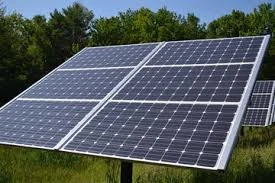double sided solar
Double-Sided Solar Panels Harnessing Sunlight from Every Angle
In the quest for renewable energy, solar technology has emerged as one of the leading solutions to combat climate change and reduce our carbon footprint. Among the most innovative advancements in this field is the development of double-sided solar panels, also known as bifacial solar panels. This technology not only enhances the efficiency of solar energy capture but also redefines how we think about solar installations.
Understanding Double-Sided Solar Technology
Traditional solar panels typically capture sunlight from one side, utilizing photovoltaic cells to convert solar radiation into electricity. Double-sided solar panels, however, are designed to absorb sunlight from both the front and back surfaces. This innovative design allows for the capture of reflected sunlight, significantly increasing the overall efficiency of the system.
The technology behind bifacial solar panels enables them to harness not only direct sunlight but also diffuse light and albedo effects—light reflected off the ground, buildings, or other surfaces. For instance, if installed over light-colored or shiny surfaces, these panels can take advantage of additional sunlight that would otherwise go unused.
Benefits of Double-Sided Solar Panels
1. Increased Energy Production Studies have shown that bifacial solar panels can produce 10% to 20% more energy than their traditional counterparts. This boost in energy production is particularly noticeable in environments with reflective surfaces, such as snowy areas, sandy deserts, or regions with light-colored roofing materials.
2. Durability and Longevity Bifacial panels tend to be more robust, as they are typically constructed with high-quality materials to withstand the environmental conditions on both sides. This can potentially lead to a longer operational life compared to conventional solar panels, resulting in a better return on investment over time.
3. Reduced Land Use The enhanced efficiency means that fewer panels are needed to produce the same amount of energy. This leads to reduced land requirements, making bifacial panels an attractive option for large-scale solar farms and installations in areas where land is a premium.
double sided solar

4. Versatility in Installation Double-sided solar panels can be installed in various configurations, including ground-mounted, rooftop, and solar tracking systems. Their capability to capture light from multiple angles makes them suitable for different environments and applications, from residential use to industrial energy production.
Challenges and Considerations
Despite their advantages, double-sided solar panels come with some challenges. The initial cost of bifacial technology can be higher than that of traditional single-sided panels. However, this upfront investment is often offset by the increased energy output over the lifetime of the panels.
Additionally, the installation and maintenance processes can be more complex. To maximize energy capture, it's crucial to ensure that the panels are positioned correctly and that the ground surface is optimized to reflect sunlight. Conducting a thorough site assessment before installation is essential to gauge potential energy gains from reflected light.
The Future of Solar Energy with Bifacial Technology
As the demand for clean, renewable energy continues to rise, double-sided solar panels represent a significant step forward in solar technology. Research and development in this area are rapidly progressing, leading to advancements that improve efficiency, reduce costs, and enhance durability. Many solar manufacturers are investing in bifacial technology, recognizing its potential to play a vital role in the global energy landscape.
Governments and organizations worldwide are also increasingly promoting the adoption of renewable energy sources, offering incentives for solar installations. With the growing awareness of climate change and the urgent need for sustainable energy solutions, bifacial solar technology is poised to become a cornerstone in the transition to a cleaner energy future.
Conclusion
Double-sided solar panels stand at the forefront of solar technology, transforming the way we harness energy from the sun. With their ability to capture sunlight from multiple angles, these panels offer increased efficiency, improved durability, and reduced land use, making them an appealing choice for both residential and commercial applications. As the world strives toward a more sustainable future, bifacial solar technology will undoubtedly play a crucial role in unlocking the full potential of solar energy.
-
Unlocking Energy Freedom with the Off Grid Solar InverterNewsJun.06,2025
-
Unlock More Solar Power with a High-Efficiency Bifacial Solar PanelNewsJun.06,2025
-
Power Your Future with High-Efficiency Monocrystalline Solar PanelsNewsJun.06,2025
-
Next-Gen Solar Power Starts with Micro Solar InvertersNewsJun.06,2025
-
Harnessing Peak Efficiency with the On Grid Solar InverterNewsJun.06,2025
-
Discover Unmatched Efficiency with the Latest String Solar InverterNewsJun.06,2025







